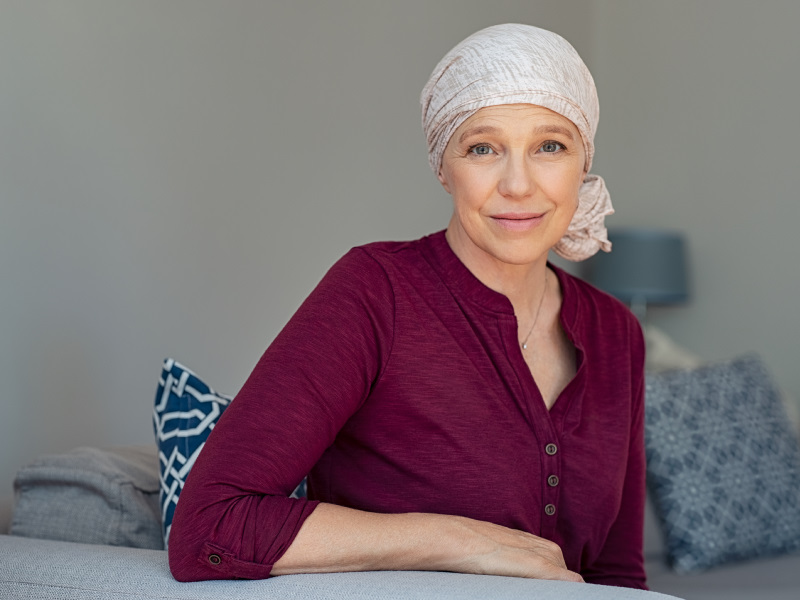Sweat—but Don’t Slip!—in Your New Favorite Workout: Hot Pilates
Harder, wetter, slower, stronger.

When it comes to the fitness world, “do it in a heated room” is like “put an egg on it:” Why not add in a little something extra for a new dimension? The concept, already near-standard with yoga, has come to Pilates (both mat and machine varieties), which has led to a hot Pilates boom across the country. Studios have opened up recently in cities like Los Angeles, Denver, and Detroit, to name just a few.
“Call me biased, but I am absolutely obsessed with hot Pilates,” says Chelsea Stewart, the founder of HAVN Hot Pilates in Denver. “It is truly a mind, body and soul experience.”
What is hot Pilates?
Hot Pilates is a Pilates workout done in a heated environment. While temperatures and kinds of heat (from infrared to standard heater) vary, the general idea is the same. It can either be mat Pilates or Pilates done on a machine.
Adding heat to any workout makes it more taxing. But practitioners say that the slow and controlled nature of Pilates, which already requires a lot of focus, gets even more mentally and physically intense when practiced in the heat.
“The heat amplifies everything,” says Angela Parretta, the CEO and founder of heated Pilates studio Drenched in Newport Beach. “You’re more aware of your body, your movements, and your breath. It also brings mental focus to another level—because it’s challenging, you have to really dial in. The warmth encourages deeper stretches, and you’ll feel your muscles activate more quickly. It’s also a cardiovascular boost—you’ll feel your heart rate increase without the need for high-impact moves.”
The heat could also potentially change the emotional or spiritual experience of the class—including an almost unavoidable mindfulness.
“Entering a hot studio with a noticeably different temperature feels like entering another dimension away from the outside world.”—Lara Rasmussen
“Infrared heat creates an immediate calming sensation for the mind and body,” Lara Rasmussen, the founder and owner of Hot Bones yoga and Pilates studio, says. “Entering a hot studio with a noticeably different temperature feels like entering another dimension away from the outside world. Heat makes Pilates movements far more challenging, which creates a focus on the present and doesn’t leave room for the mind to digress and think about the day-to-day activities that happened before, or will happen after, the class.”
Mind, body, and spirit—the added intensity of hot Pilates potentially has upsides. However, there are also some pitfalls to be aware of. If you’re thinking about trying out hot Pilates, here’s what you need to know.
How does heat affect your body during a workout?
When your body is hot, it has to exert energy to cool itself down. Because you’re already expending energy during exercise, working out in the heat makes the cooling effort that much harder.
“Heat causes your body to work harder to regulate its internal temperature, which elevates your heart rate and increases cardiovascular demand,” says Mallory Fox, MS, an NASM master trainer who has a doctorate of health science. “This can lead to a greater [energy expenditure] compared to working out in a cooler environment.”
Essentially, your heart is pumping harder from the exercise and the cooling processes. Speaking of those cooling processes, you also might find yourself sweating a whole lot more, which is the way your body cools itself down. That means you’re losing more water than you would while exerting yourself in a neutral environment.
Heat also increases blood flow, which can make you more limber, potentially affecting the way you stretch and move during activity.
“Muscles become more pliable, reducing stiffness and enhancing flexibility, which may allow for a deeper range of motion during exercise,” Fox says.
Hot Pilates benefits
There are a few hallmarks of Pilates that get affected by heat. Pilates requires near-constant core engagement as well as mobility and flexibility. It’s also not typically a cardio-focused or sweaty workout. That all changes in the heat.
Your cardiovascular system will work harder
Your heart might get pumping in a way it doesn’t during non-heated Pilates classes.
“When you add heat to classes, you’ve now added an entirely other element: endurance,” says Stewart. “Heat helps you build and work on your cardiovascular health by increasing your heart rate, without partaking in high-impact, rigorous workouts.”
Your breath will work double time
Doing transverse abdominal breathing is key to engaging the core in Pilates, but in the heat this might be harder to sustain.
“Pilates incorporates mindful breathing, and heat can increase the demand on the respiratory system,” Fox says. “Managing breath in a heated room might require more effort, making it important to maintain focus on your breathing pattern to prevent fatigue.”
You’ll sweat buckets
If you’re used to coming out of a non-heated Pilates class looking fresh as a daisy, be warned: Your sweat glands will be working overtime to cool your skin down during hot Pilates.
Sweating has a few benefits, including being great for getting a healthy glow in your skin from the inside out, according to Piedmont Healthcare.
You’ll work that mind-muscle connection even harder
Ever feel a little spacey in the heat? Your body is getting taxed by the temps. That makes working to engage your muscles in Pilates even harder.
“Pilates emphasizes mind-body movement, which can provide an opportunity to slow down, focusing on controlled movements, breathwork, and core strength,” says Fox. “This mental and physical focus can make the experience of doing it in a heated room unique compared to other heated modalities like hot cardio or boot camp classes. The breath-centric, low-impact nature of Pilates might feel more intense in heat because the exercises require deep muscle engagement and precise form.”
Stewart feels there’s both a physical and mental benefit to the need to focus.
“It forces you to breathe, slow down, and focus on true muscular engagement that yields results without complete wear and tear through rigorous high-impact workouts,” says Stewart.
You’ll enjoy increased mobility and range of motion
Your leg circles and hip extensions might feel a bit different with the added lubrication of heat.
“When you add heat to Pilates classes, you allow your muscles to loosen and become more pliable, faster, in order to avoid injury,” Stewart says. “The heat helps loosen your joints and muscles so that your range of motion and flexibility increases without overstretching or injuring yourself.”
Risks and things to keep in mind
With added exertion comes some extra need for caution. Here’s what the pros say you need to keep in mind to safely make the most of hot Pilates.
Hydrate and fuel
Because you’re sweating more, you can get dehydrated more quickly than you might think. Make sure to take small sips of water throughout class. You’ll also want to eat about an hour before class, advises Stewart, so that you’ve got adequate energy to expend. Rasmussen’s studio even serves bone broth in order to help replenish lost electrolytes.
“To get the most out of hot Pilates, you have to consider the recovery just as important as the movement itself,” Rasmussen says. “Throughout a 60-minute heated Pilates class, the body [expends a lot of energy] and precipitates excessively, resulting in dehydration and loss of nutrients. To recover effectively, you have to replenish the body with electrolytes, amino acids, vitamins, and nutrients immediately.”
Wear proper clothing
Sweat-wicking clothing and grip socks can help make the experience both more comfortable and safer to prevent slipping. You’ll also want to wear tighter-fitting tops so that your shirt isn’t falling into your eyes during pike planks.
Be careful of overstretching
You’re at risk of a muscle or joint injury if you get too deep into all the bending, folding, and twisting involved in Pilates.
“Overstretching can also be a risk because your muscles are so warmed up,” Parretta says. “Make sure you maintain control and don’t push yourself too far beyond your limits.”
Austin Martinez, MS, CSCS, ATC, vice president of training and experience at StretchLab, previously told Well+Good that some common signs you might be pushing too deep include holding your breath, squirming, nerve pain, or sharp pains in the muscle.
When in doubt, come back to the breath
Because breathing helps you engage your muscles in Pilates, focus your mind, and send oxygen and nutrients throughout your body, if you feel lost or overwhelmed, retrain your focus on your breathing.
“Focus on your breath,” Parretta says. “It’s your best tool to stay calm and centered in the heat. Breath control can really transform your experience.”
Listen to your body and pull back when you need to
“The heat can increase your heart rate and perceived exertion, which may cause some people to push themselves too hard without realizing it,” Fox says. “It’s important to listen to your body and rest if you start feeling lightheaded, dizzy, or overly fatigued. Please seek assistance when needed—’no pain, no gain’ is not always the best mantra when it comes to your well-being.”
What's Your Reaction?








![How to Understand & Calculate Statistical Significance [+ Example]](https://www.hubspot.com/hubfs/how-to-calculate-statistical-significance-1-20250106-7754856.webp)






























.png)












































